The term “America’s Pastime” was coined in 1856 by the New York Mercury (Library of Congress) in the pioneering age of the sport of baseball. For over 165 years, the term has stood as a testament to what the sport means for many. In recent years, however, minds have changed about the belief of the sport’s impact on contemporary American culture. A recent Knight Krier poll of over 120 students suggested exactly that with less than half of the students poll saying it was America’s pastime.
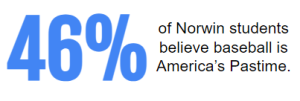
So what exactly happened to the prominence of baseball and its dying impact on our culture? Why has the sport lost the moniker of “America’s Pastime,” and what does it mean for youth sports involvement?
The Early Days (1876-1903)
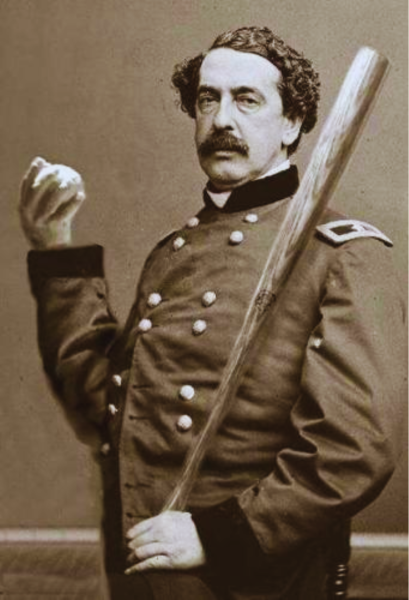
The game of baseball was originally believed to have been created by Abner Doubleday, a Civil War hero and Cooperstown native who wrote the rules, created the iconic “diamond” and established positions according to Britannica.com and Baseballhall.org.
The “mania” that ensued created a national launch of the game, with the founding of Major League Baseball (MLB) coming shortly after in 1876. The American and National Leagues would be separate until the “National Agreement,” in 1903. In 1903, the first World Series was played between the Pittsburgh Pirates and Boston Americans (now Red Sox) with a 5-3 series win for Boston.
For the past 121 years (except; the 1994 player’s CBA strike), the running of the fall classic has jolted America and included the first pitch by presidents Woodrow Wilson, Calvin Coolidge, Herbert Hoover, FDR, Harry S. Truman, Dwight D. Eisenhower, Jimmy Carter (3x), and George W. Bush; Bush accomplished the feat a record 5 times.
A Generational Shift
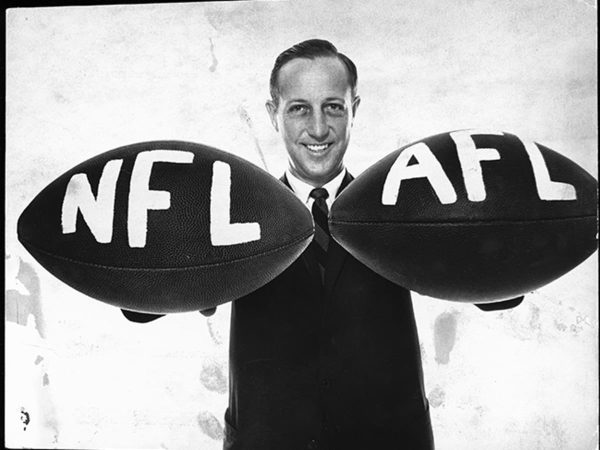
On June 8, 1966, the American Football League and National Football League merged into what we now know as the modern NFL.
The creation of the Super Bowl and rise of TV and radio contracts in the 1960s and 70s showed the decline of baseball was fast approaching. In 1994, then MLB commissioner Bud Selig introduced a proposal to force a salary cap into Major League Baseball. The players of MLB went on strike in opposition to the agreement, prematurely ending the 1994 MLB season and giving opportunity for the meteoric rise of sports such as NASCAR, NBA, and American Soccer.
For many, this marked the end of “America’s Pastime,” but in just 4 short years, minds would change once again.
The Steroid Era (1994-2004)

Pictured from right to left: Sammy Sosa, Mark McGwire, Rafael Palmeiro, and Curt Schilling (C-Span)
José Canseco is a name best known for his towering home runs, divisive personality, and his 2005 book ‘Juiced,’ which brought to light the steroid problem in baseball. To backtrack, the public viewed the 1994 strike as the downturn of popularity for the sport and was no longer tuning in as frequently.
Commissioner Bud Selig knew this fact and the motion for change in baseball was in action. Steroids are believed to have first entered Pro Ball around 1985 with Canseco being known as the first user and major supplier. As the years went on, popularity for the drugs raged on throughout the 90s, culminating in an epic summer showdown between Mark McGwire and Sammy Sosa to break Roger Maris’ all-time home run record (61) which had stood for over 35 years.
The NL Central rivals both accomplished the feat with McGwire’s record-breaking 70, and Sosa’s MVP season ending with 66.
The popularity of what occurred during the 1998 season was enough for fans to come back to ballparks and turn baseball back on their television sets. Baseball shot back up the popularity charts and had overtaken basketball and trailed only the NFL for some time. That time, however, was upended by the shocking true story from George John Mitchell. The Mitchell Report destroyed what fans argued was Baseball’s resurgence and sent one man, Kirk Radomski, to prison for 5 years.
The end of the Steroid Era was a curse in disguise for baseball and Commissioner Selig’s reputation, devastating the Hall of Fame chances of 2 of the greatest ever, Barry Bonds and Roger Clemens.
The Aftermath
The aftermath of The Mitchell Report is one that most in our generation were not around for. Pittsburgh is a football town and the Pirates’ last 32 seasons have left much to be desired. According to that same Knight Krier poll, the majority (38%) of respondents picked football as their sport of choice to watch.

As shown, baseball is a divisive topic. The divide amongst students shows a disturbing trend for the sport. Football was favored more often by a considerable margin and the divide between baseball’s market share and up-and-coming sports such as lacrosse and Major League Soccer are more apparent than ever.
According to a recent Pew Research Center poll, “More than half of Americans (53%) say America’s sport is football – about twice the share who say it’s baseball (27%).”
Michael Liebdzinski was a baseball coach for 30 years, including 19 as the head coach at Norwin High School before retiring after the 2022 season. Liebdzinski achieved over 200 wins, 8 section championships, and a 2016 WPIAL title and believes the game has changed on a youth level.
“Parents have always been invested in their child’s activities but I believe that their expectations have changed as a result of the growth of AAU and travel baseball,” stated Liebdzinski. “Many of these programs require a significant investment in both time and money for parents. As a result, I feel that parents have an expectation of significant playing time and return on their investment, like college scholarships, that they didn’t have before. I also believe that their financial commitment makes them feel as though they have a right to have input on various on-field decisions made by coaches. This certainly has made coaching youth baseball more challenging.”
Youth Sports are parent-driven endeavors.
Youth Participation in Baseball
While the decline of the sport has been evident in the past 50 years, is this still true of the youth game? According to findings from The Aspen Institute, youth participation in Baseball has steadily fallen from 16.5% to 12.6% from the years 2008-2021.
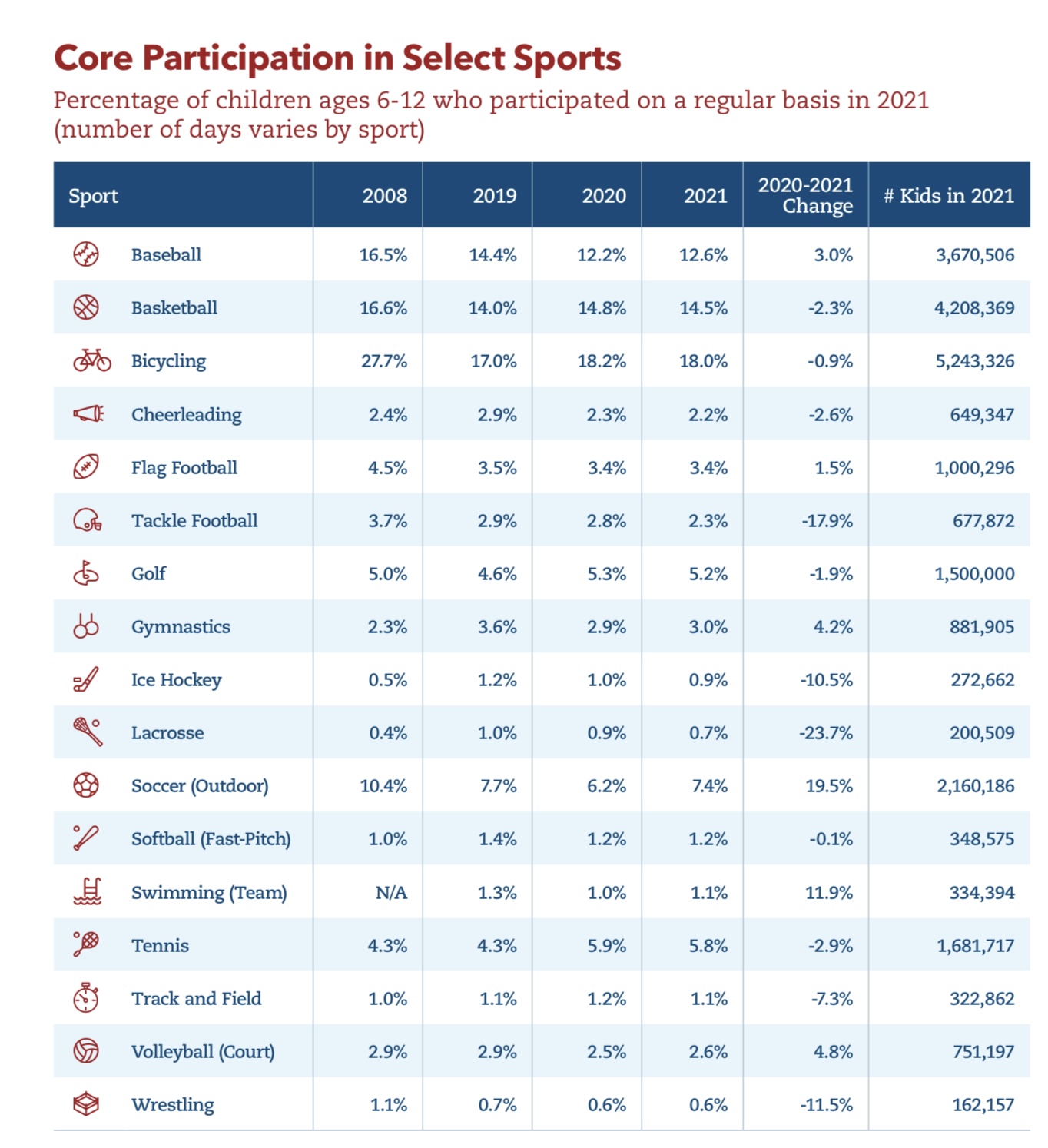
The decline in youth participation is connected with the decline of the sport’s popularity with the general public over time. Youth sports have become out of control when it comes to the cost.
According to USA Today, families can expect to pay on average $3700 per year on travel baseball. Travel baseball can indicate a player’s future and the right development can pay off big time. Unfortunately, the circumstances needed to develop a player into a big leaguer are incredibly rare and need nearly everything to be perfect. If a player fizzles out in College or Minor League ball (which only .09-2% of the top players can expect to even get to) what is the money even good for?
Parents are much more hesitant to give away nearly $4,000 for their kid to ride the bench as the coach’s kids get the majority of the playing time. The sport differs from others that cost a similar amount such as basketball and soccer, as baseball needs expensive equipment each year on top of the entry fees. Growing boys and girls means new shoes, bats, gloves, bags, helmets, and other equipment nearly every season.
As someone who grew up with a brother who played on travel baseball teams, I’ve seen firsthand what happens in travel baseball. Admittedly, it is a fun and albeit impressive way to spend a weekend. The problems come when the mail shows that you need to pay anywhere from $400-700 for those weekends at specific facilities. The financial burden that the sport brings is evident and taxing on the athletes who participate. Stories of families selling household items, changing jobs, and other financial stress are not uncommon and can serve as a reminder of the sport’s decaying state.
MLB Rule Changes
Baseball is a game that has not introduced massive changes often in its history. Fans of the major leagues are notorious for rejecting change and not believing that change is necessary. Lack of change has halted the progression of the sport’s popularity, and in turn, has caused the sport to decline rapidly since the turn of the century.

The season is too long. The games are too boring. Baseball is a dying sport. These terms are nothing new to the general public as it is a sentiment shared by those even at Norwin High School. Major League Baseball has permanently changed the game to combat the criticisms of fans and media alike with 3 distinct rule changes implemented ahead of the 2023 MLB season, with more to come heading into 2024.
Pitch Clock
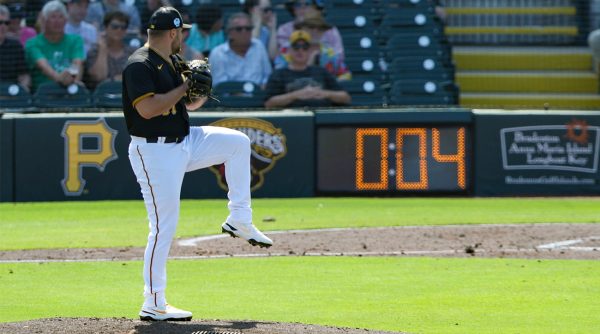
In 2023, America’s biggest problem was solved with the addition of a pitch clock to the major league level. All jokes aside, the game time of regular season MLB games was significantly sped up as a result. In 2022, the average regular season MLB game was 3 hours and 3 minutes. This was down from 2021’s record-setting 3 hours and 10 minutes, but the game was only slowing down from 2012-2022 non-consecutively. In 2023, the pace of play crept down to 2 hours and 39 minutes. This was the fastest pace of play since the 1980s (1985 specifically) and showed the sports world that the MLB wasn’t going to back down amidst significant competition.
Scott Servais, Manager of the Seattle Mariners, spoke to the NY Times in May 2023 about the rule changes in baseball through the league’s first months of the 2023 season.
“The first five innings of a game fly by,” Servais said. “We’ve got two or three hits, they’ve got two or three hits and you look up and it’s the fifth inning and we’re not even at an hour. It’ll slow down a little bit from there, but there are some nights where I’m thinking, ‘We’re going to get this done in like an hour and 50 minutes.”
The pitch clock is a popular rule change not only with managers but with fans as well. A poll by Morning Consult Pro asked fans about the new rules, “About 2 in 3 avid MLB fans (67%) and more than half of MLB fans (55%) said they support starting a 15-second pitch clock when the bases are empty.”
The pitch clock is a success and prolongs the lifespan of baseball. Now let’s take a look at the other rule changes.
Bigger Bases
The injury problem on the diamond has been apparent in the game of baseball for some time. MLB aimed to fix this problem with bigger bases. MLB took the standard 15-inch base and increased the base by 3 inches to 18 in. Player safety is crucial for the rigor of the 162-game season. MLB’s reasoning was;
“This change will create a 4 1/2-inch reduction in the distance between first and second base and between second base and third, which encourages more stolen-base attempts. The bigger bases could also have the effect of reducing sliding in which a player loses contact with the bag while sliding through it…. “fielders have an extra 3-inch advantage to stay out of harm’s way from the baserunner while receiving throws.”

The bigger bases have certainly promoted stolen bases. In 2023, stolen bases were up a remarkable 40% at 3,503 (2023) vs. 2,486 (2022). This mark was the highest since 1987, the heyday for stolen bases with Vince Coleman’s league-leading 109. Ronald Acuna Jr. produced the league’s first 40 home run 70 stolen base season; amassing a whopping 73 stolen bases, the most since Jose Reyes in 2007. Acuna Jr.’s season was in the conversation for the most impressive season ever and they received NL MVP honors after the 2023 season. Batters were also happy to see Yadier Molina not behind the plate for the Cardinals for the first time in 19 seasons.
Defensive Shift Change
2023 introduced the elimination of the defensive shift that has plagued pull-hitters since the 2016-17 season. By 2017, the Houston Astros and Tampa Bay Rays had mastered the defensive shift, causing a hitter’s nightmare and helping propel the Astros to the 2017 World Series. The field was “aesthetically ugly” as coined by Sports Illustrated and the use of shifts skyrocketed from the 2019-2022 seasons. 2022 set a record with a 38% usage rate league-wide and a record 62% against left-handed hitters.
The new rule prevents infielders from crossing 2nd base before the play, resulting in players in their natural position pre-play. Infielders will also not be allowed to switch positions unless an in-game substitution occurs. Before this, MLB defenses would put their savant where the hitter would typically pull his swing toward pre-play.
The result of banning the opportunity to shift has not only made the game more aesthetically pleasing to look at, but the rule has worked in increasing the batting average across MLB. In 2023, MLB’s batting average was up .05 points from 2.43-2.48 as well as the average number of runs per game from 8.6 to 9.2.
Rule Changes Worked. Prepare for More
The successful implementation of the 2023 MLB season was encouraging to say the least. The MLB cracked 70 million in attendance for the first time since 2017. Ratings increased ever-so-slightly for TBS at just a 4% clip, but their mid-season peak viewership was a 41% increase compared to 2022. This may seem inconsequential, but in reality, the spike in viewership was a testament to the overall fan experience being upgraded because of the new rules.
With that being said, the saying “Don’t let a good thing go bad” is the feeling surrounding eager MLB fans at Spring Training 2024. Fanatics is the official jersey manufacturer of MLB and NHL jerseys and took their first crack at it this offseason. Unfortunately, the jerseys are not only significantly downgraded due to the near removal of stitching altogether, but the jerseys and pants are see-through. This comes as Nike released their Vapor Premier line focused on dri-fit, lightweight material for “increased player performance.”
With the elimination of the uniqueness of the colors Dodger Blue and Cubbie Blue, Nike has yet again allowed a soul and lifeless concept to come out with its branding. The jerseys this year also come with a markup of nearly $100 mark up for the game-worn jerseys ($329.99-$424.99). The argument might sound trivial, but players have mixed reactions along with disappointment from fans.
Not all bad news
It isn’t all bad news however when it comes to the incremental changes that are taking place as an expansion to the multitude of changes laid out in 2023. Changes such as 5 Mound visits per game to 4, a pitch clock with runners on from 20 down to 18 seconds, and the widening of the base paths from 18-24 inches. MLB was experimenting with the idea of a designated pinch-runner rule; tested throughout the Atlantic League, an independent MLB affiliate league, throughout the 2023 season.
While updates on the experiment are not yet available to the public, since 2019 the Atlantic League has tested rules that have been successfully incorporated at the MLB level. The Atlantic League tested the pitch clock, extra-inning runner, wider bases, ban of the defensive shift, and the 3-batter minimum for pitchers before they made it into MLB across 2020-2023 according to FLOBaseball.
Conclusion
The game of baseball’s impact on contemporary American culture has shown an evident decline for over 60 years now. Without the game of baseball, the countries of America, Nicaragua, Venezuela, Cuba, Japan, the Dominican Republic, and others would tell a completely different story; an unfulfilled one at that. Baseball brings people together and is recognized as the national sport of 8 different countries.
Marking the downturn of an American Pastime is not done, however, without love. Baseball is my favorite sport and a game that I respect and cherish. My story could not be told without the game of baseball. That fact is one that hundreds of millions can attest to globally. We live in a divided, scary, and downright confusing world and we need baseball more than ever. The simple game with beautiful weather, electrifying atmospheres, and a whole lot of hot dogs is a call back to many of our childhoods and can help us rekindle the spirit of happiness and bliss to take our minds off of today’s world. In a divided world, we can come together with the once-proclaimed “America’s Pastime,” and love the game of baseball once again.










Richard Durland • Aug 9, 2024 at 6:29 pm
For the most part, I believe people are missing the elephant in the room……MLB’s inability to consistently harvest the best talent available. Sound funny? Maybe, but “Winning the Day – Saving Baseball” proves it in numerous incontestable ways. Strikeouts have doubled in the last twenty years, batting averages have plummeted from .271 to the low to mid .240’s, and OBP has dropped ten percent. Cheating has run rampant, and elongated game times and soaring costs are ruining the game. Pick up a copy and you be the judge…..